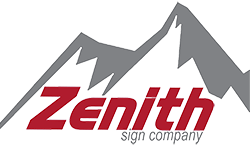 In today's world, creating an inclusive and welcoming environment for everyone is not just good practice, it's the law. The Americans with Disabilities Act (ADA) ensures equal access for people with disabilities in public spaces, and a crucial part of that is signage. Whether you're a seasoned business owner or just starting out, navigating ADA sign requirements can seem complex. But fear not! This comprehensive guide will equip you with all the knowledge you need to understand ADA signage, ensure your business is compliant, and achieve accessibility on a budget. Let's dive in and explore how to make your business a welcoming space for everyone!
In today's world, creating an inclusive and welcoming environment for everyone is not just good practice, it's the law. The Americans with Disabilities Act (ADA) ensures equal access for people with disabilities in public spaces, and a crucial part of that is signage. Whether you're a seasoned business owner or just starting out, navigating ADA sign requirements can seem complex. But fear not! This comprehensive guide will equip you with all the knowledge you need to understand ADA signage, ensure your business is compliant, and achieve accessibility on a budget. Let's dive in and explore how to make your business a welcoming space for everyone!
Required ADA Signs: To create a welcoming and inclusive environment for everyone, the Americans with Disabilities Act (ADA) outlines specific signage requirements for businesses. This section will detail the essential signs your business needs to display for clear and unobstructed access.
- Accessibility: Mark accessible entrances, restrooms, elevators (if applicable) with clear signage.
- Exits: Identify all exits with easy-to-find signs, including paths leading to them.
- Accessible Parking: Clearly mark designated accessible parking spaces.
Elements for ADA Signs: Effective communication is key for everyone. This section explores the crucial design elements ADA-compliant signs must possess to ensure clarity and comprehension for individuals with visual impairments.
- High Contrast: Use contrasting colors for background and text (think light background with dark text, or vice versa) to ensure readability for those with visual impairments.
- Raised Characters & Braille: Include raised lettering and braille for the visually impaired.
- Pictograms (Optional): Consider adding pictograms (symbols) alongside text for universal understanding.
- Non-Glare Finish: Avoid glossy or reflective signs that can be difficult to read.
Cost-Effective Tips: Creating a welcoming and accessible space doesn't have to break the bank. This section provides tips on cost-effective strategies to ensure your ADA signage meets regulations without exceeding your budget.
- Focus on essentials: Start with the most crucial signs - accessible entrances/exits, restrooms, and accessible parking.
- Simple materials: Plastic or acrylic signs are cost-effective and durable.
- DIY Options: Consider online resources or templates for creating your own signs, ensuring they meet ADA specifications. However, ensure the raised lettering and braille meet size and placement requirements.
- Pre-made signs: Many companies sell pre-made ADA signs that are affordable.
The most important ADA signs a small business needs to have focus on clearly communicating accessibility features for customers with disabilities. Here's a breakdown of the essentials:
- Accessible Entrance: A sign with the International Symbol of Access (ISA) prominently displayed to mark the designated accessible entrance
- Accessible Restrooms: Signage with the ISA symbol identifying accessible restrooms, including both single-occupancy and multi-stall options if available.
- Accessible Parking: Clear signage with the ISA symbol marking designated accessible parking spaces. These signs should also include the international wheelchair symbol.
- Exits: Signage with clear and easy-to-read text indicating all building exits, including any paths leading to them.
This core set of signs ensures essential information is communicated for those who rely on accessibility features. Depending on your business layout, additional signs might be beneficial, such as for elevators or assistive listening systems.
Additional Resources: The information provided here offers a solid foundation for understanding ADA signage requirements for small businesses. For those seeking a more in-depth exploration of the regulations or specific details, this section provides valuable resources. ADA regulations can be extensive, so here are some helpful resources for further guidance:
- ADA website: The ADA website offers a wealth of information on signage requirements https://www.access-board.gov/ada/guides/chapter-7-signs/
- Small Business Guide: The ADA offers a guide specifically for small businesses on readily achievable barrier removal, which includes signage https://www.ada.gov/resources/title-iii-primer/
Remember, even small businesses are required to comply with ADA regulations. This doesn't have to be a daunting task. By prioritizing the essential signs for accessibility and implementing cost-effective strategies, you can ensure your business is welcoming and inclusive to a wider range of customers. This not only fulfills legal requirements but also broadens your customer base and fosters a positive reputation for your business. It's a win-win for everyone!
